Instructions for growing pumpkin outdoors in the Urals: nuances and advice for novice farmers
Pumpkin is an unpretentious and healthy vegetable originally from hot Latin America. For its rich content of vitamins, minerals and nutrients, pumpkin is rightfully called the queen of autumn. On gloomy autumn days, it is good to make a warming soup, a healthy casserole or a delicious pie from a bright orange vegetable.
The plant's love for warmth and sunlight is due to its southern origin. In our latitudes, pumpkin cultivation has its own characteristics. In this article, we will tell you about the secrets of growing pumpkin in the open field in the Urals and in neighboring regions.
The content of the article
Varieties suitable for the Urals
The key to successful crop cultivation in the Urals is a competent choice of varieties... Thanks to modern breeding, you can choose a variety of vegetables for almost any region, including those with short and not too hot summers.
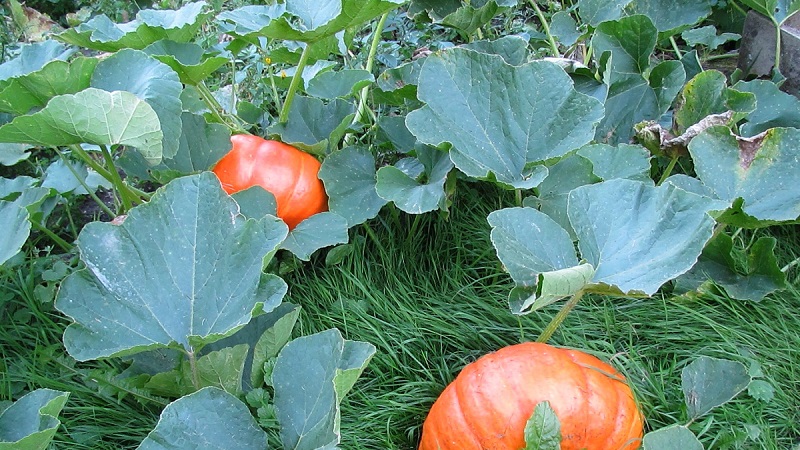
Interesting fact... In Germany, the pumpkin festival is held annually, where you can see bright orange fruits from all over the world. The largest specimens weigh several hundred kilograms!
When choosing a variety, first of all, attention is paid to its resistance to frost. and the timing of fruit ripening. Colds in the Urals also occur in June, so early and mid-season varieties are chosen for planting, as well as those that ripen during storage.
We list the best varieties for cultivation in temperate climates:
- Chit Is a mid-season variety bred specifically for growing in regions with cool summers. From the moment of emergence of seedlings to technical maturity, it takes from 115 to 125 days. The bush is powerful, with long stems. Grown through seedlings. The average weight of pumpkins is 2.5-3 kg. The color of the peel is light gray, the pulp is bright orange. The dense, sugary fruits keep well until spring.
- Freckle - early ripe bush pumpkin. The pumpkins are medium-sized, on average 3 kg. The peel is light green, the flesh is yellow-orange. A distinctive feature of the variety is a delicate pear flavor. Provides a stable yield with proper care. Differs in keeping quality.
- Pearl grade refers to medium early varieties. Large pear-shaped gourds mature in 100 days. The variety is resistant to temperature changes, tolerates small frosts well and pleases with a high yield (15 kg / m²). The pulp has a sweet taste and nutmeg aroma.
- Curative Is another early ripening variety. From the moment of emergence to technical maturity, 100-105 days pass. The pumpkins are large, up to 5 kg. The shape of the fruit is rounded-flattened, with a thin skin. Ripe pumpkins have excellent taste. Differs in keeping quality and resistance to low temperatures.
- Smile - early ripening variety, ripening in 85 days. The bushes are compact, the fruits are small, on average 1.5-2 kg. It blooms beautifully. The fruits are bright orange with light stripes. The pulp is sugary and aromatic. A characteristic feature of the variety is good keeping quality.
- Bush gold - an early ripe bush pumpkin variety. The fruits ripen within 90 days from the moment of germination. The bushes are compact, perfect for growing in small gardens. The shape of the fruit is spherical, the color of the peel is light orange. The average weight of pumpkins is 3 kg. The pulp is juicy, aromatic, with a high sugar content.
Growing features
So that the grown pumpkin is pleasing to the eye and tastes good, you need to create optimal conditions for her cultivation.A pumpkin bed is prepared in advance.

When choosing a site for planting, the following criteria are taken into account:
- Illumination. Pumpkin belongs to light-loving crops. In the shade, pumpkin bushes grow slowly and bloom late. In the absence of a suitable open space, the pumpkin is planted in partial shade, near large trees.
- Availability of protection from cold wind. The most successful place for a pumpkin patch is a fence or wall on the north side, and an open sunny space on the south.
- Space. Pumpkin bushes grow strongly and have a strong root system. Therefore, the feeding area of the bush is very large. When planting, 1-2 m are left between the plants, depending on the climbing ability of the variety.
Need to know... Pumpkin bushes grow well in warm beds prepared in the fall.
It is important to adhere to the basic rules of crop rotation. Plants are not planted in the same spot every year... They return to the old site after a few years. Then the soil will have time to recover, and the pumpkin plantings will delight with the harvest.
Pumpkin is demanding on its predecessors. Plant well after potatoes, onions, cabbage, root vegetables and legumes... Undesirable predecessors include pumpkin relatives such as cucumbers, zucchini, squash. These plants attack common diseases and pests..
In the conditions of the short and cool Ural summer it is important to provide pumpkin crops with protection from drafts and adequate lighting... The less sunlight falls on the inflorescences, the less ovaries will form. Lack of sun also provokes the development of diseases and the appearance of pests.
Pumpkin planting dates in the Urals
Pumpkin is a southern plant that is sensitive to cold weather.... Delicate young leaves are easily damaged by night frosts. Even a slight drop in temperature is detrimental to crops. The optimal time for sowing seeds for the Urals is no earlier than May 10 (with the seedling method of growing). Seeds are sown about three weeks before transplanting into open ground.
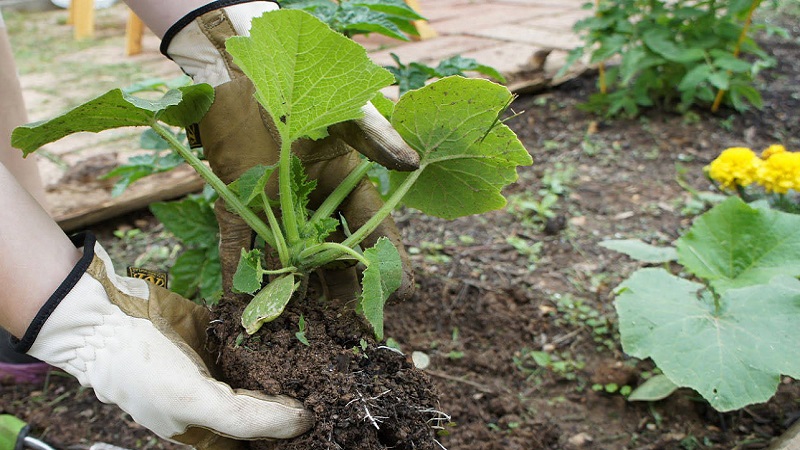
When choosing a date for sowing, experienced gardeners are guided by the lunar calendar... Seeds are planted in the ground on favorable days. It is good to sow a pumpkin in the days of the growing moon. An unfavorable period is the new moon and the last phase of the waning moon. In 2019, May 7, 8, 9 and 10 are considered auspicious days for planting pumpkin seeds.
Direct and seedling method of growing
In the Urals, pumpkin seeds are planted directly into open ground or through seedlings. With the direct method of cultivation, crops are protected from cold weather with a covering material. The bed is kept under the film until the threat of night frost has passed.
Advice... Considering that there are frosts in the Urals in mid-June, it is preferable to grow pumpkin seedlings.
Growing seedlings begins with the preparation of seed... The seeds are first warmed up in a warm place for several days, and then germinated. For sowing, healthy, heavy, medium-sized seeds are selected.
The selected material is disinfected in a solution of potassium permanganate or in any other way. This will protect tender sprouts from diseases and pests. After that, the seeds are placed in a damp cloth and kept until a sprout appears.
Sprouted seeds are planted in the ground (a mixture of peat, turf and humus in a ratio of 2: 2: 1). They are sown to a depth of 2-3 cm. Pumpkin seedlings are sensitive to picking, therefore it is preferable to immediately use separate cups or peat pots. The recommended volume of one container is 500 ml.
When the first shoots appear the seedlings are transferred to a cool place with a temperature of 15-18 ° C for about a week. So the sprouts will not stretch out and get stronger. After 6-7 days, the temperature is raised.
Seedling care consists in feeding and in timely watering separated water at room temperature. Moisten the soil regularly, but in moderation. Drying out of the soil or waterlogging of the soil leads to the death of plants.
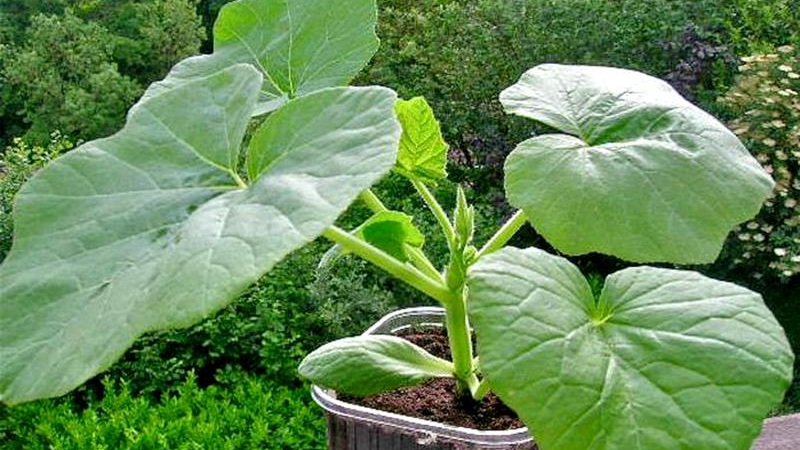
One week after germination carry out feeding with nitrofoskoy strictly in accordance with the instructions. Excess fertilization will lead to deformation of the seedlings and their too rapid growth.
Need to know... Healthy pumpkin seedlings are sturdy, short-stemmed plants with small internodes and dark green leaves.
With the setting of warm weather pumpkin bushes are periodically exposed to the air for hardening. Planting in open ground is carried out when 2-3 true leaves are formed in plants.
Growing and caring for pumpkin
Seedlings are planted in open ground only after a stable above-zero temperature is established day and night. This usually occurs in early June.
For each bush, a cup-sized depression is made in the ground, in which the seedlings grow. The well is moistened with warm water. The plant is carefully removed from the container and planted. The distance between the bushes is calculated based on the characteristics of a particular variety. The manufacturer usually indicates the recommended scheme on the package with seeds.
After transplanting, the garden bed is watered and covered with non-woven material.... The shelter will save tender young plants from the scorching sun, wind and cold. Further care for pumpkin beds consists in regular watering, fertilizing, loosening the soil, and removing weeds.
Besides, in order to increase yields, gardeners use special techniquesallowing you to adjust the number and size of pumpkins. Such agricultural techniques include pinching and pinching.
Important... Summers in the Urals are short and often cool. In such conditions, leaving a lot of pumpkins on one bush is impractical. Too many fruit set will slow down the ripening process.
Pumpkin formation begin pinched top of the main lash... The purpose of the event is to enhance the growth of side shoots. As the bush grows, excess side lashes are also removed. Thinning greenery improves the access of light and air flow to the bush. 3-4 fruits are left on each lash. The lash is cut so that 4-5 sheets remain above the last fruit.
If you let the bush grow freely, the root system will not cope with providing the fruits with the necessary nutrition. Restricting the growth of green mass forces the plant to direct all its forces to ripening the available fruits.
To help plants recover faster, work on the formation of bushes is carried out on a cool day, in the morning. After pinching, the bushes are periodically examined to make sure that pathogens have not penetrated into the plant through the wounds.
Common diseases and pests
Pumpkin bushes, like any vegetable crop, are not immune to the development of diseases and pest attacks. Measures are taken when the first signs of a problem appear, otherwise you can lose not only the pumpkin harvest, but also other crops on the site.
Bacteriosis is one of the common pumpkin diseases.... The disease is recognized by light brownish spots on the cotyledons and angular spots on the leaves. The affected tissues gradually darken and dry out. Compliance with crop rotation is a good prevention of bacteriosis. When the first signs of the disease appear, the bushes are sprayed with 1% Bordeaux liquid. The treatment is repeated after 1.5-2 weeks.
Root rot... As the name suggests, the disease affects the root system. The stems turn brown, the growth of the bush stops, the lower leaves turn yellow. The reasons for the development of the disease: changes in day and night temperatures, watering plants with cold water. At the first sign of root rot, soil is poured onto the stems to form additional roots.
Affects pumpkin bushes and white rot... The symptom of the disease is a white coating on the leaves and stems of the plant. The affected areas feel soft and slimy to the touch. If a problem is detected, the diseased parts of the bush are removed, the cut sites are treated with copper sulfate (30 g per 3 liters of water).
If the pumpkin is affected by powdery mildew (white bloom, which causes wrinkling and death of leaves), the foci of infection are treated with ground sulfur or sprayed with 80% colloidal sulfur.
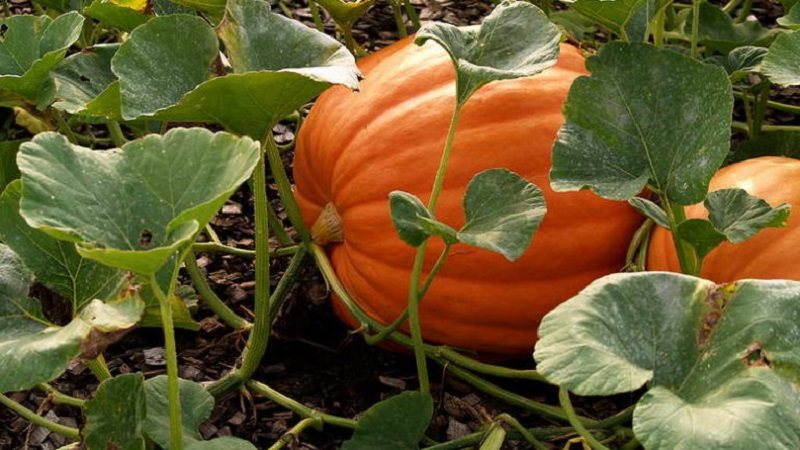
Pumpkin crops are susceptible to spider mite attacks... The pest affects the underside of the leaves, braiding the plant with a thin web. The leaves turn yellow and dry out. If you do not fight the parasite, the plant dies. Spraying with a solution of onion husks (3 kg per 10 liters of water) will help to cope with the tick.
Another dangerous pest is the melon aphid... The pest lives on weeds, and then infects pumpkin plants. Aphids settle on the underside of leaves, on shoots, ovaries and flowers. It feeds on plant sap. Affected leaves curl and fall off. Plant growth slows down. An effective control measure is spraying plants with karbofos (100 g per 10 l of water).
When to remove a pumpkin from the garden
It is not enough to grow a rich harvest in the Urals, you need to harvest it in time... The most delicious and healthy pumpkin is fully ripe. Unripe fruits are not only inferior in taste, but also poorly stored. Excellent keeping quality is inherent only in those fruits that have ripened in the garden.
At the same time, delaying cleaning harvest leads to the appearance of rotten and damaged pumpkins. Such fruits will not be stored for a long time.
When to Harvest? When determining the timing of collection, first of all, they are guided by to information from the manufacturer of the variety. The exact dates of the onset of the technical ripeness of the fruit are indicated on the package with seeds. In addition, the ripeness of pumpkins is determined by the hard, dried stalk, dense peel and the pattern of the crust characteristic of a particular variety.
Pumpkin treats for the winter:
Harvesting and storage
When harvesting, pumpkins are cut along with the stalk... This lengthens the shelf life. Then the fruits are dried for 7-10 days in a warm place. During drying, excess moisture is removed and the pumpkin rind is strengthened.
Attention... In a well-ventilated area, pumpkins last longer.
Store the crop in a dry, cool place, spreading it out on racks... The optimum air temperature in the storage is 6-8 ° C, humidity is 70%. All pumpkins will last 1-2 months without damage. For longer storage, large fruits with a dense, hard skin are selected.
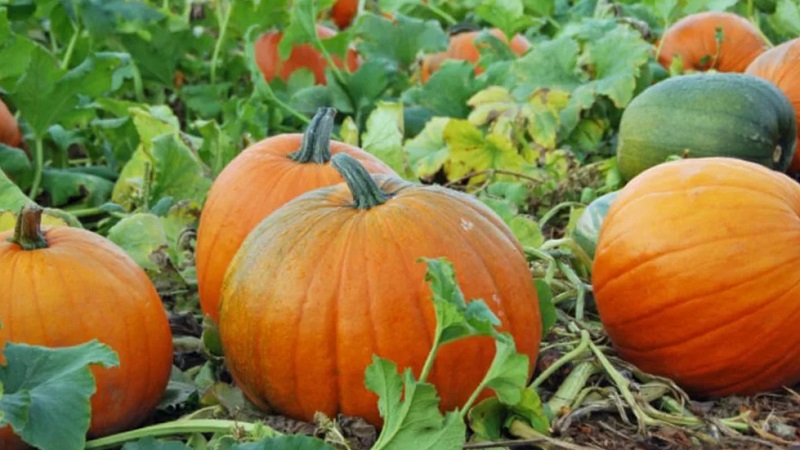
Conclusion
The correct approach to the cultivation of crops allows you to grow a large and tasty pumpkin even in the Urals. A competent choice of varieties, timely planting and care will provide you with a rich harvest, despite the short summer and temperature drops.